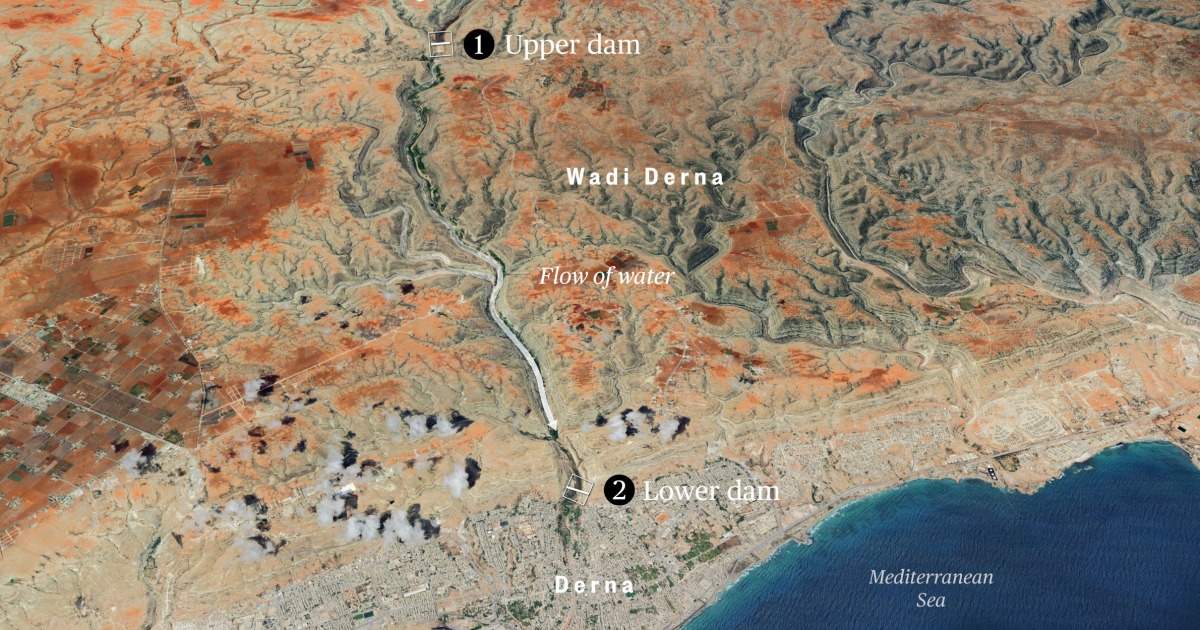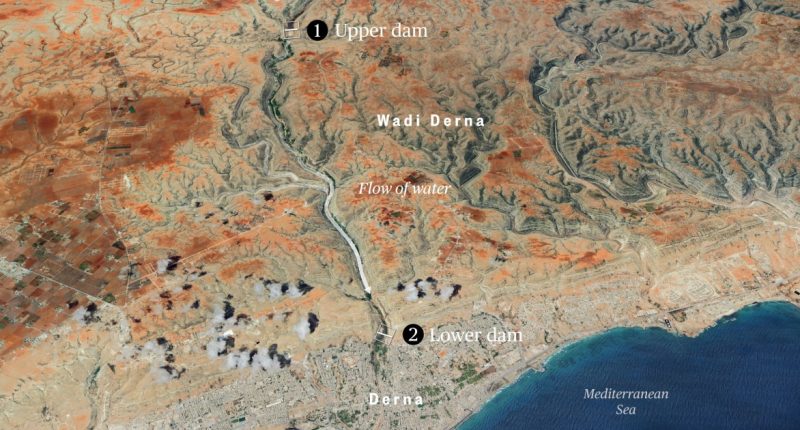
The 243-foot Abu Mansour dam, some 8.6 miles from the city, was capable of holding up to 22.5 million cubic meters of water. This was more than 10 times the capacity of the lower dam, which was much closer to the Derna.
The two dams had suffered major damage in the 1980s, Libya’s general prosecutor al-Sediq al-Sour said last week during a news conference, adding that a government study a decade later revealed cracks and fissures in their structures. Subsequent restoration efforts failed to launch despite a growing number of reports about the lack of upkeep and continued calls for maintenance.
Al-Sour said officials would investigate the collapse of the two dams as well as the allocation and management of maintenance funds.
Before the flooding disaster, residents were confident the dams would hold, as they always had. Some officials were also confident, with the interior ministry’s security committee ordering a curfew to be lifted on Sept. 11 — a directive that contradicted earlier evacuation orders.
But in the early hours of Sept. 11, the upper dam collapsed and sent a wave of water into the city, overturning cars and burying entire streets in mud.
Source: | This article originally belongs to Nbcnews.com










